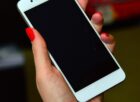Apple USB-C: A Comprehensive Overview

Introduction
Apple USB-C has become increasingly popular in recent years due to its convenience and versatility. This article aims to provide an in-depth understanding of Apple USB-C, including its overview, types, popularity, quantitative measurements, differences, and a historical analysis of its advantages and disadvantages.
1. An Overview of Apple USB-C

Apple USB-C is a type of connector developed by Apple Inc. that allows for faster data transfer, increased power delivery, and seamless connectivity between devices. Unlike its predecessor, the USB-A, which was bulky and had limited capabilities, Apple USB-C is more compact and offers a universal standard for connecting different devices. Its slim, reversible design has made it a favorite among users, eliminating the frustration of trying to plug it in the right way.
2. Presentation of Apple USB-C Types and Popularity
Apple USB-C comes in various types, including cables, adapters, and ports. The cables are used to connect devices, such as iPhones, iPads, or MacBooks, to charging bricks or other compatible devices. Adapters allow users to connect devices with different connector types, such as USB-A or HDMI, to their USB-C enabled devices. USB-C ports can be found on Apple’s latest devices, including MacBooks and iPads, providing a more streamlined approach to connectivity.
Among the popular types of Apple USB-C are:
– USB-C to Lightning Cable: This cable allows for fast charging and data transfer between iPhones and USB-C enabled devices. It is widely used by iPhone users who want to take advantage of the faster-charging capabilities.
– USB-C to USB-C Cable: This cable is commonly used to connect devices with USB-C ports to each other. It is commonly used with MacBooks and other USB-C enabled devices.
– USB-C to HDMI Adapter: This adapter allows users to connect their USB-C enabled devices to external displays or monitors with HDMI ports. It is popular among professionals and content creators who need to connect their devices to larger screens for presentations or editing work.
3. Quantitative Measurements of Apple USB-C
Apple USB-C offers impressive quantitative measurements that enhance the overall user experience. These measurements include:
– Data Transfer Speed: USB-C supports high-speed data transfer rates, making it efficient for transferring large files or streaming high-resolution media. The latest USB-C technology, USB 3.1 Gen 2, offers data transfer speeds of up to 10 Gbps.
– Power Delivery: Apple USB-C supports Power Delivery (PD) technology, allowing for faster and more efficient charging. It can deliver up to 100 watts of power, enabling users to charge their devices quickly.
– Video Output: USB-C provides support for video output, allowing users to connect their devices to external displays or monitors with ease. It supports various video standards, including HDMI, DisplayPort, and VGA.
4. Discussion on Differences Between Apple USB-C Variants
Despite being the same connector type, Apple USB-C variants can differ in terms of capabilities and compatibility. The main differences arise from the USB-C version, power delivery capabilities, and supported protocols.
For example, older USB-C cables may not support Power Delivery, limiting their charging capabilities. Additionally, different USB-C devices may support different versions of the USB-C standard, leading to variations in data transfer speeds. It is crucial for users to ensure compatibility between their devices and the USB-C variants they are using to optimize performance.
5. Historical Analysis of Advantages and Disadvantages of Apple USB-C
Over the years, Apple USB-C has introduced numerous advantages and disadvantages. Understanding the historical context can shed light on the evolution of this technology.
Advantages of Apple USB-C:
– Reversible Connector: Unlike previous connector types, Apple USB-C is reversible, eliminating the frustration of plugging it in the wrong way.
– Faster Data Transfer: USB-C offers faster data transfer speeds compared to its predecessors, making it ideal for transferring large files quickly.
– Enhanced Power Delivery: USB-C supports Power Delivery, allowing for faster charging of devices.
– Versatility: USB-C is a universal standard, making it compatible with various devices, including smartphones, tablets, laptops, and accessories.
Disadvantages of Apple USB-C:
– Compatibility Issues: Some older devices may not be compatible with USB-C or require adapters to connect.
– Cost: USB-C cables and adapters can be more expensive compared to older connector types.
– Market Fragmentation: The introduction of different USB-C versions and power delivery capabilities has led to market fragmentation, requiring users to ensure compatibility.
Conclusion
Apple USB-C has revolutionized connectivity and charging standards, offering users faster data transfer, enhanced power delivery, and a universal connector. Its versatility and convenience make it an excellent choice for various devices and purposes. However, users should be aware of the differences between USB-C variants and ensure compatibility for optimal performance. As technology continues to evolve, Apple USB-C is expected to play an even more significant role in the digital world.











